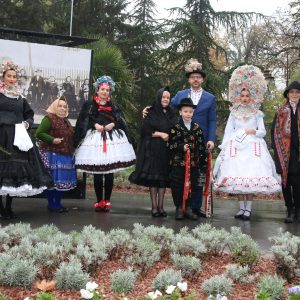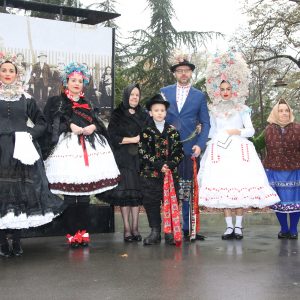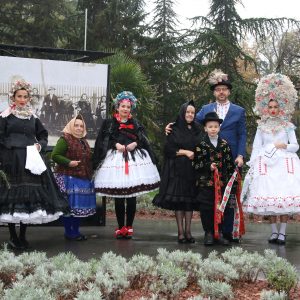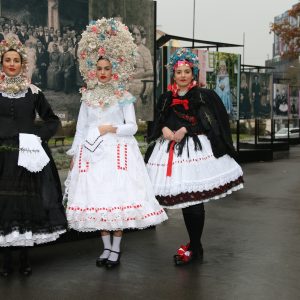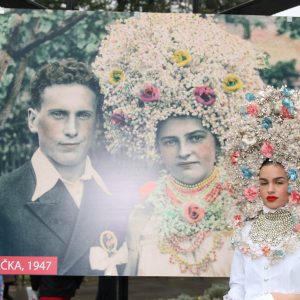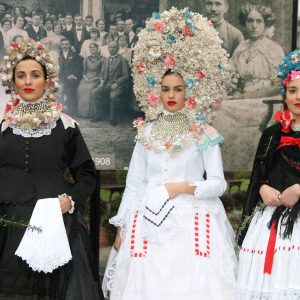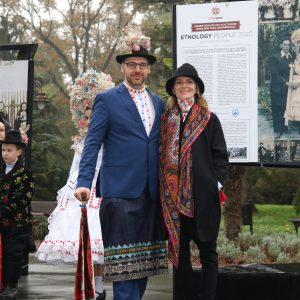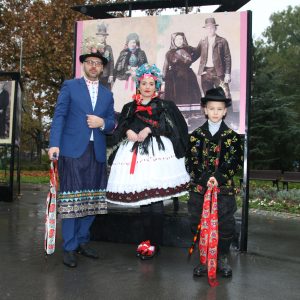The culture of a community of people is the identity of its life and clothes, and that recognizable visual stamp is becoming a brand today
An unusually beautiful exhibition “Etnology People – Slovak Wedding” was opened yesterday, organized in cooperation with the Fortress of Belgrade, the Ministry of Culture and Information of the Republic of Serbia, Cultural Center Kisac and the Slovak Cultural Information Center, with an exclusive presentation of the exhibition “Slovak Wedding” by author Pavel Surovi. The exhibition is an integral part of this year’s ‘Etnology Fest 2020’ program, whose director is Goga Grubješic, and the festival is organised by SuperStar Culture agency.
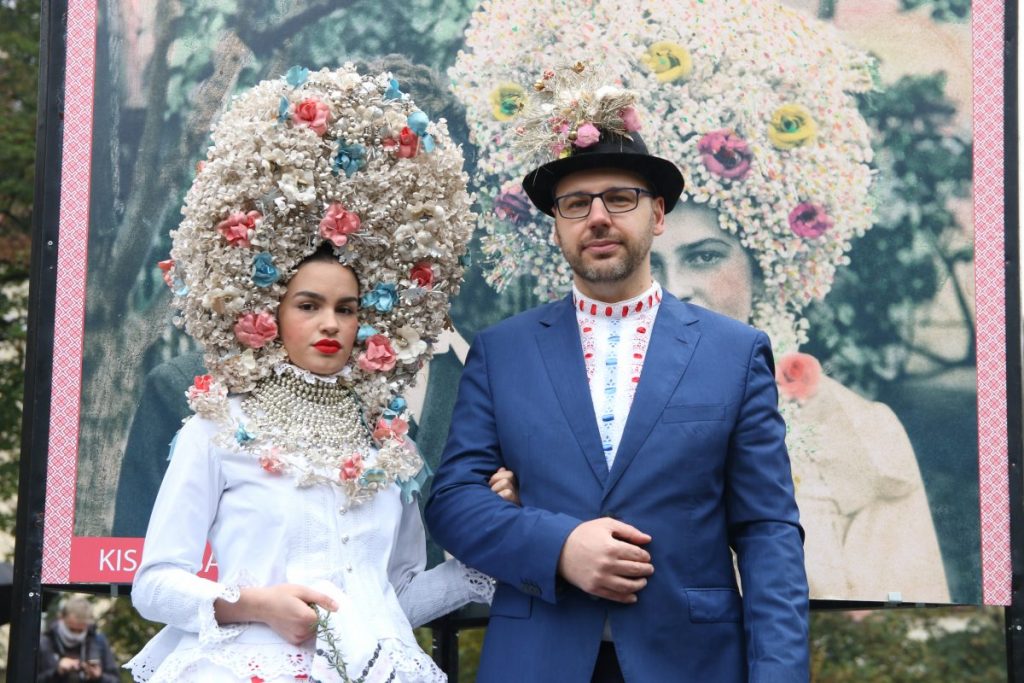
The exhibition “Slovak Wedding” showcases the rich colours of Slovak costumes, as well as the status of families until the Second World War. The photographs were made in black and white, but the photographers supplemented the applications and decorations with a special retouching technique by which they painted certain parts of the costume in order to make their display as authentic as possible. By adding colour to the pictures of young married couples at weddings, before or after the ceremonies, these looked even more attractive. Photographers at the time usually made several sets of photographs of young people: they photographed the girl and the young man before the wedding as fiancés, on the wedding day and after the wedding. Sometimes, portraits of young people were also made. The photographer was hired mostly by wealthy families.
The exhibition shows the wedding costumes of Slovaks from Bačka, Banat and Srem. A research was done for this project, led by the director of the Kisac Cultural Center Pavel Surov in cooperation with the president of SKIC Miroslav Brno about Slovak wedding costumes and collecting old photos, which were found only among wealthier families. Slovak costumes were created under the influence of people who lived in the area of the then Austro-Hungary at that time. Thus, the Slovak costume took on the elements of the costumes of the people with whom the Slovaks coexisted in this area. Therefore, it is not surprising that the costumes are significantly different, it could be said that they are unique in every Slovak environment.
In the showcased photos, costumes are made of materials purchased in Vienna, Budapest, Prague, Paris, and Istanbul. Dominated by cashmere, silk, velvet, ottoman, satin, fabric. Slovaks in Serbia are characterised by a magnificent wedding headpiece (Slovak: parta) which is circular in shape, and represents the life cycle. It also symbolises innocence, youth, a new beginning of life. A squared Slavic swastika decorated with grain and pieces of crops often appears on the costumes as a motif, and symbolises fertility and fruitfulness. The bride originally married in a black costume, which represents the sadness for youth and freedom, a parting from home. After the First World War, the white wedding costume was introduced, as a symbol of joy to meet the new beginning. This French fashion did not come to life in all Slovak communities. Individually, the black costume remained in some places as a wedding costume.
The area of present-day Vojvodina has been inhabited by Slovaks since the 17th century. They arrived invited by Maria Theresa with the hope of a better life along the Danube, Tisza and Sava. The friendship between Serbs and Slovaks has lasted for three centuries. Throughout history, they have stood together for better or worse, fighting for freedom and dreaming of their common state. At the Great National Assembly, 62 delegates of Slovak nationality voted for the annexation of Backa, Banat, Srem and Baranja to the Kingdom of Serbia.
Slovaks consider Serbia their only homeland and home. Although Slovaks have preserved their national and cultural identity to this day, many of the costumes shown in the photographs have long since been lost, and the rest are kept in ethno museums, while others in private collections.
The honorary sponsor of Etnology Fest is Mrs. Tamara Vučić, wife of Aleksandar Vučić, President of Serbia. The exhibition “Slovak Wedding” is showcased in front of the Art Pavilion “Cvijeta Zuzorić” at the Belgrade Fortress of Kalemegdan and will last from November 5 to November 19, 2020.
About the author
Pavel Surovi from Kisac, director of the Cultural Centar Kisac, is also a world-renowned graphic designer, photographer, collector of Slovak artifacts, costumes and furniture, and is the author of the Slovak Folk Costume Festival in Serbia. He has dedicated the last few years to the preservation of Slovak culture and folklore. He found a new and exclusive way of presenting Slovak culture and spreading the good name of Slovaks from Serbia. Pavel Surovi’s new art project – “Slovak Queens, Princesses, Countesses and Princes”, will be shown for the first time exclusively on November 28 in the town of Kisac. Model Katarina Markovic from Belgrade is participating in that project, also shown in this exhibition as a Slovak queen in a white wedding costume with a magnificent headpiece.
